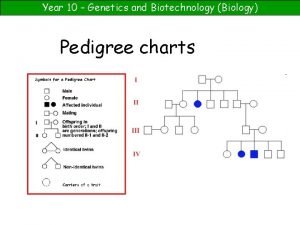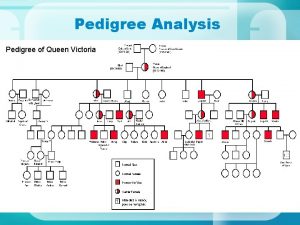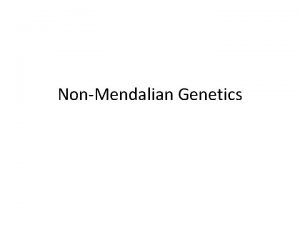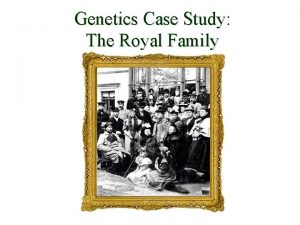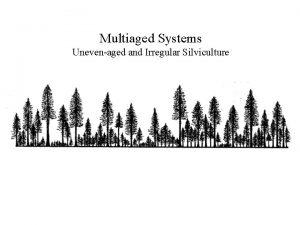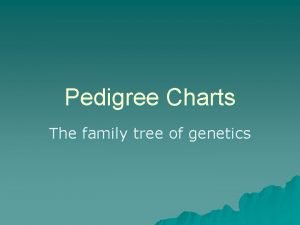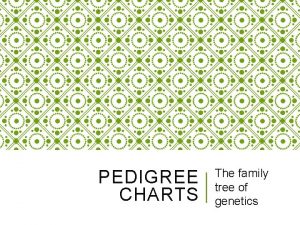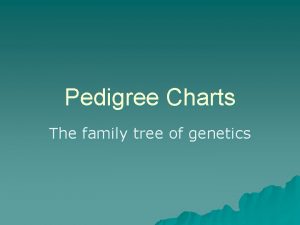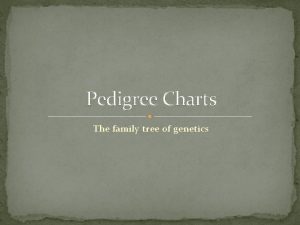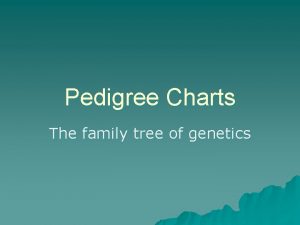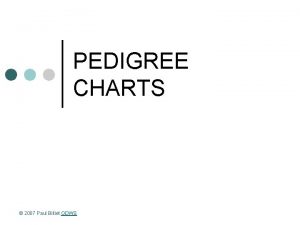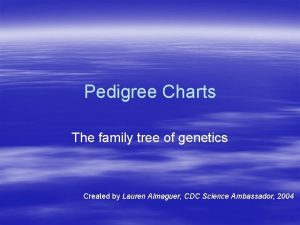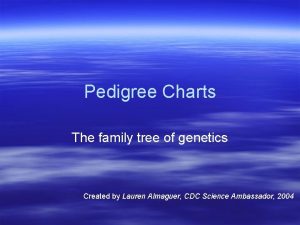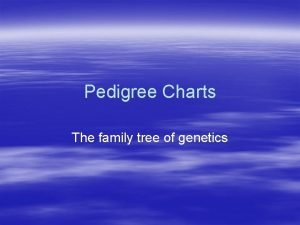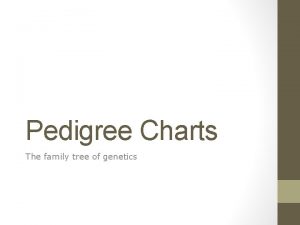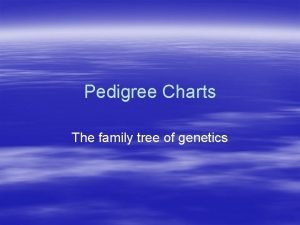Pedigree Charts The family tree of genetics Created

















- Slides: 17

Pedigree Charts The family tree of genetics Created by Lauren Almaguer, CDC Science Ambassador, 2004

Overview I. What is a pedigree? a. b. II. Definition Uses Constructing a pedigree a. b. III. Symbols Connecting the symbols Interpreting a pedigree

What is a Pedigree? ▪ A pedigree is a chart of the genetic history of family over several generations. ▪ Scientists or a genetic counselor would find out about your family history and make this chart to analyze.

Constructing a Pedigree ▪ Female ▪ Male

Connecting Pedigree Symbols Examples of connected symbols: ▪ Married Couple ▪ Children

Example ▪ What does a pedigree chart look like?

Symbols in a Pedigree Chart

Symbols in a Pedigree Chart ▪ ▪ Affected X-linked Autosomal carrier Deceased

Interpreting a Pedigree Chart 1. Determine if the pedigree chart shows an autosomal or X-linked disease. – If most of the males in the pedigree are affected the disorder is X-linked – If it is a 50/50 ratio between men and women the disorder is autosomal.

Example of Pedigree Charts ▪ Is it Autosomal or X-linked?

Answer ▪ Autosomal

Interpreting a Pedigree Chart 2. Determine whether the disorder is dominant or recessive. – If the disorder is dominant, one of the parents must have the disorder. – If the disorder is recessive, neither parent has to have the disorder because they can be heterozygous.

Example of Pedigree Charts ▪ Dominant or Recessive?

Answer ▪ Dominant

Example of Pedigree Charts ▪ Dominant or Recessive?

Answer ▪ Recessive

Summary ▪ Pedigrees are family trees that explain your genetic history. ▪ Pedigrees are used to find out the probability of a child having a disorder in a particular family. ▪ To begin to interpret a pedigree, determine if the disease or condition is autosomal or Xlinked and dominant or recessive.
 Pedigree diagram
Pedigree diagram Pedigree only males affected
Pedigree only males affected Pedigrees practice
Pedigrees practice Act or declaration about pedigree example
Act or declaration about pedigree example Pedigree symbols
Pedigree symbols Victoria pedigree
Victoria pedigree X linked dominant pedigree
X linked dominant pedigree Flipnob family pedigree answer key
Flipnob family pedigree answer key Romanov family pedigree
Romanov family pedigree What kind of wave is created if a tree falls in a forest?
What kind of wave is created if a tree falls in a forest? Oldest tree created using
Oldest tree created using Hát kết hợp bộ gõ cơ thể
Hát kết hợp bộ gõ cơ thể Slidetodoc
Slidetodoc Bổ thể
Bổ thể Tỉ lệ cơ thể trẻ em
Tỉ lệ cơ thể trẻ em Voi kéo gỗ như thế nào
Voi kéo gỗ như thế nào Glasgow thang điểm
Glasgow thang điểm Chúa yêu trần thế
Chúa yêu trần thế
